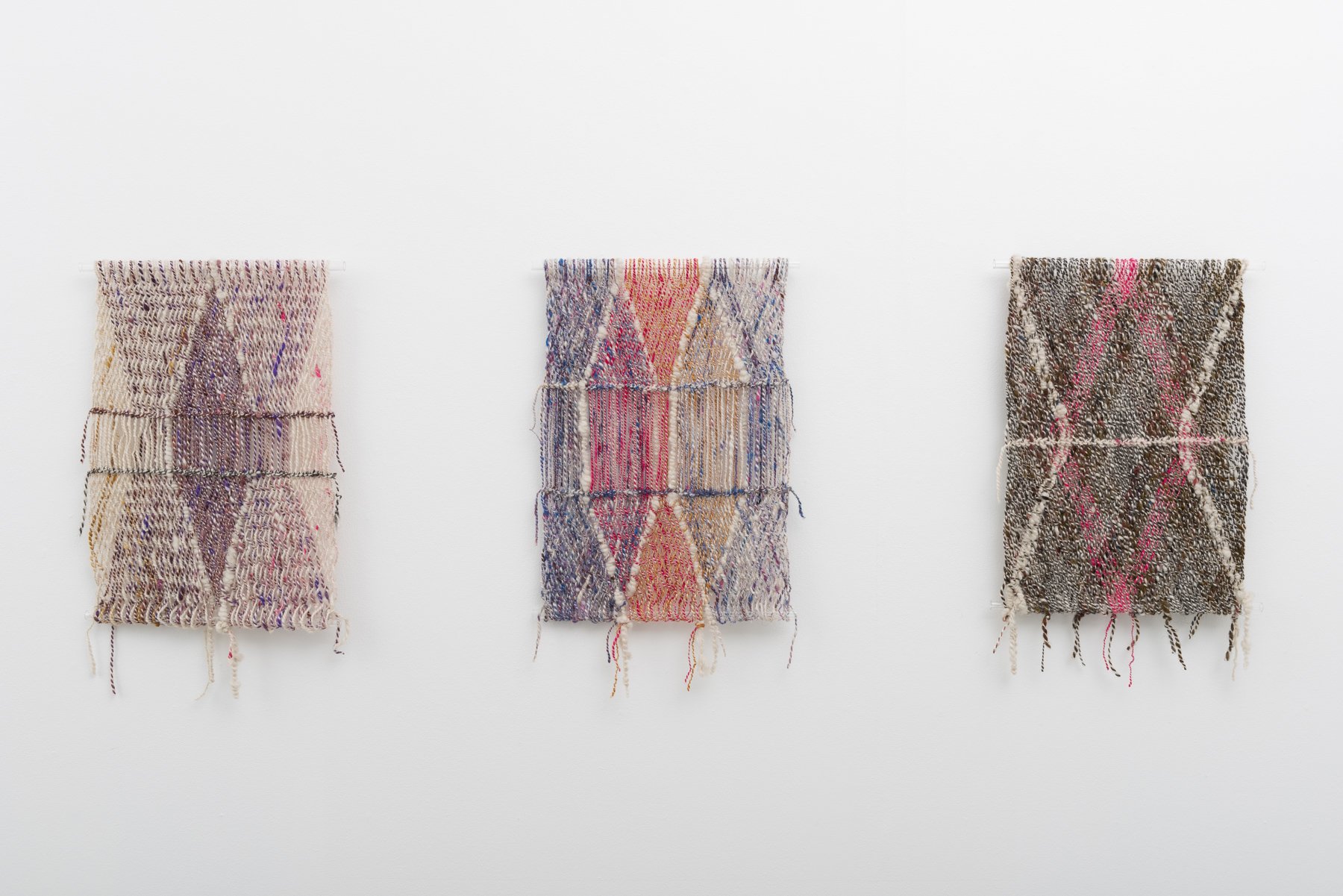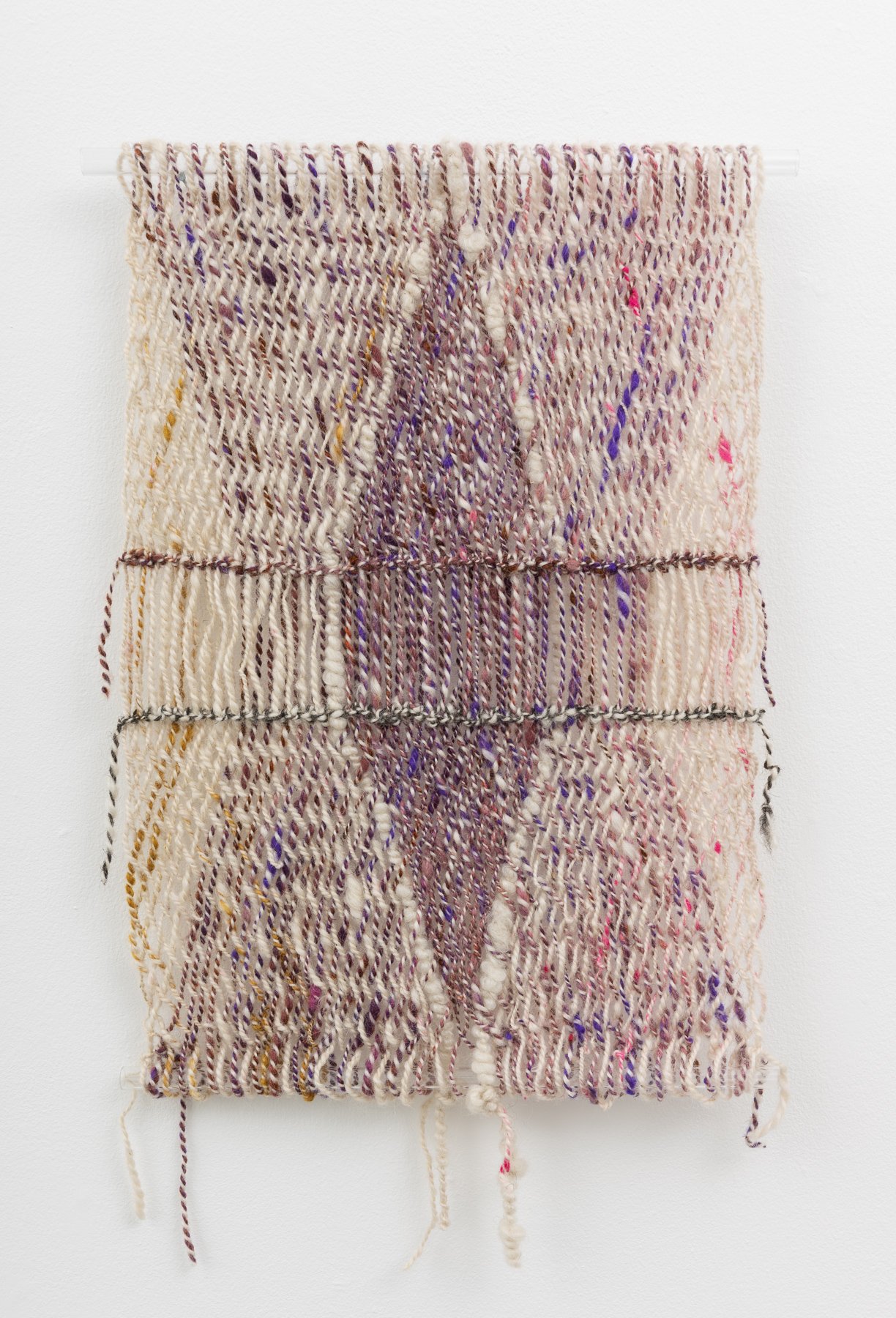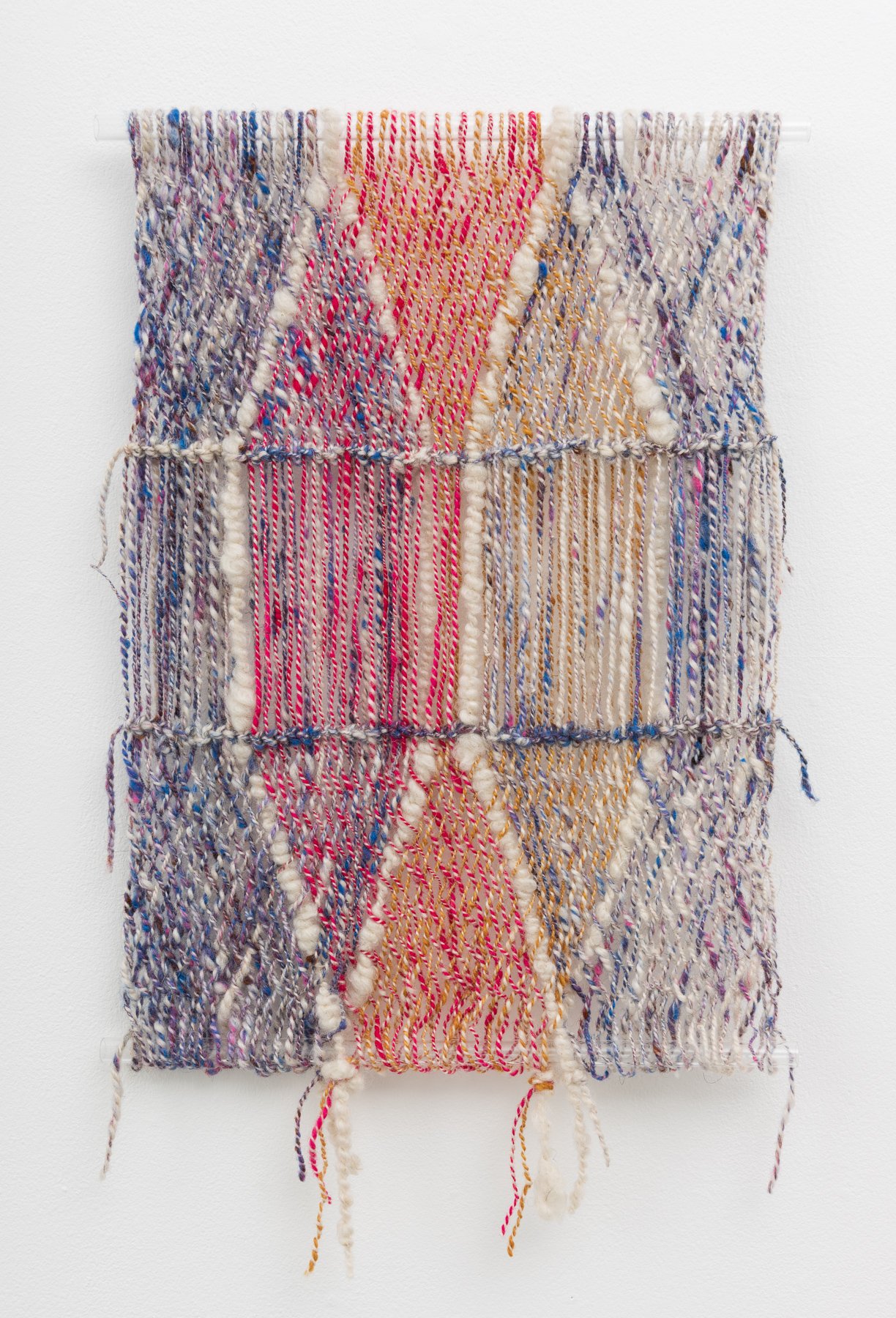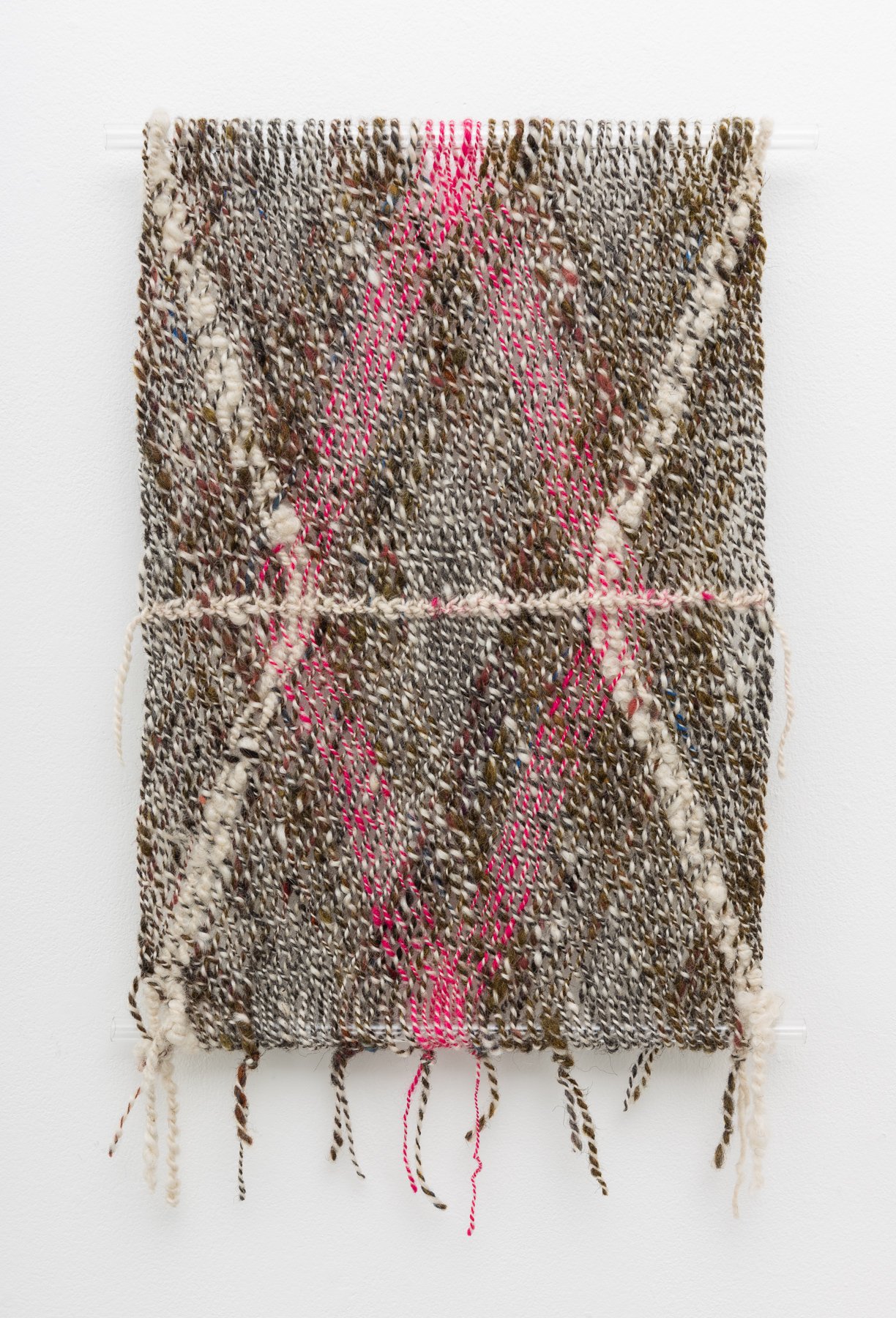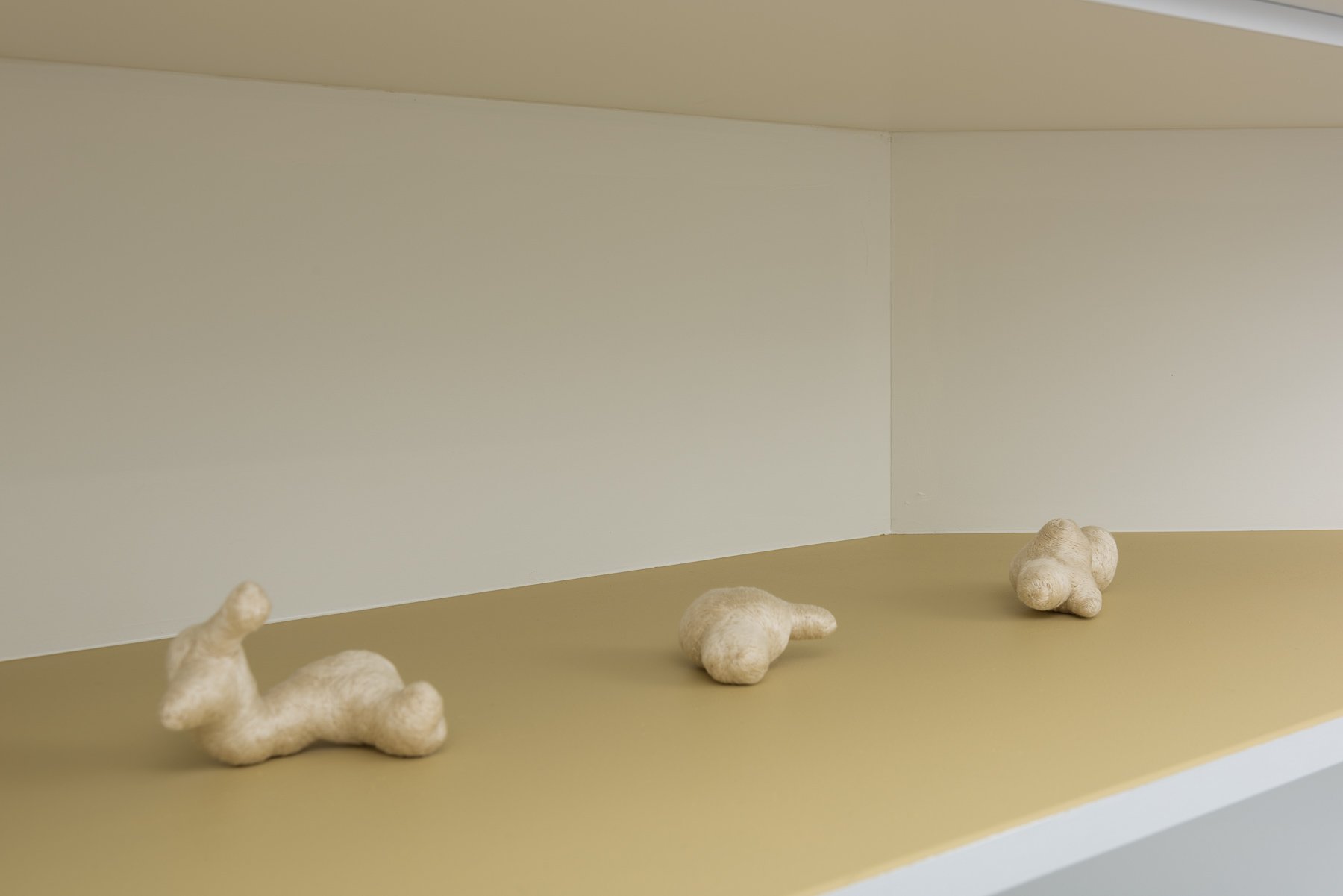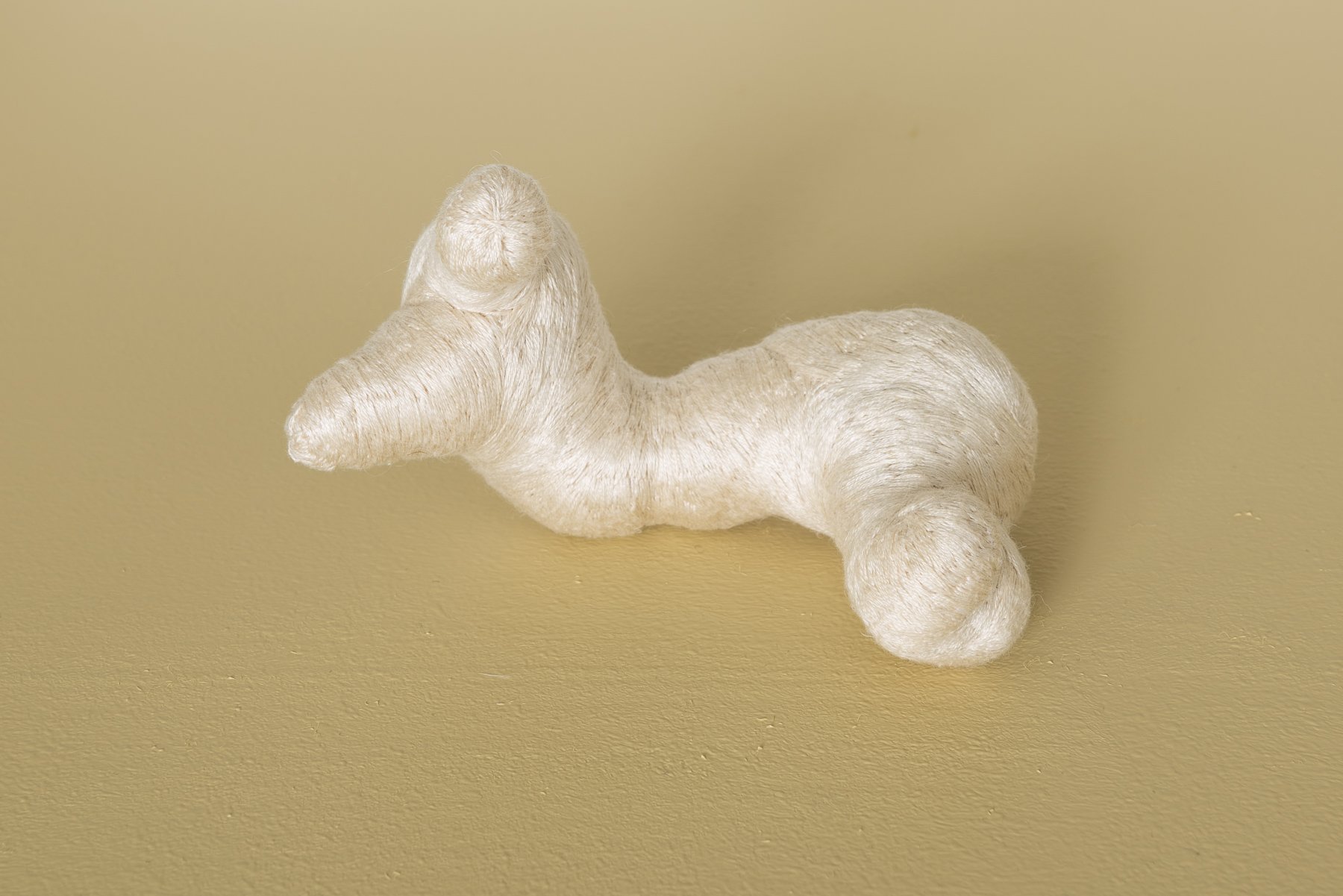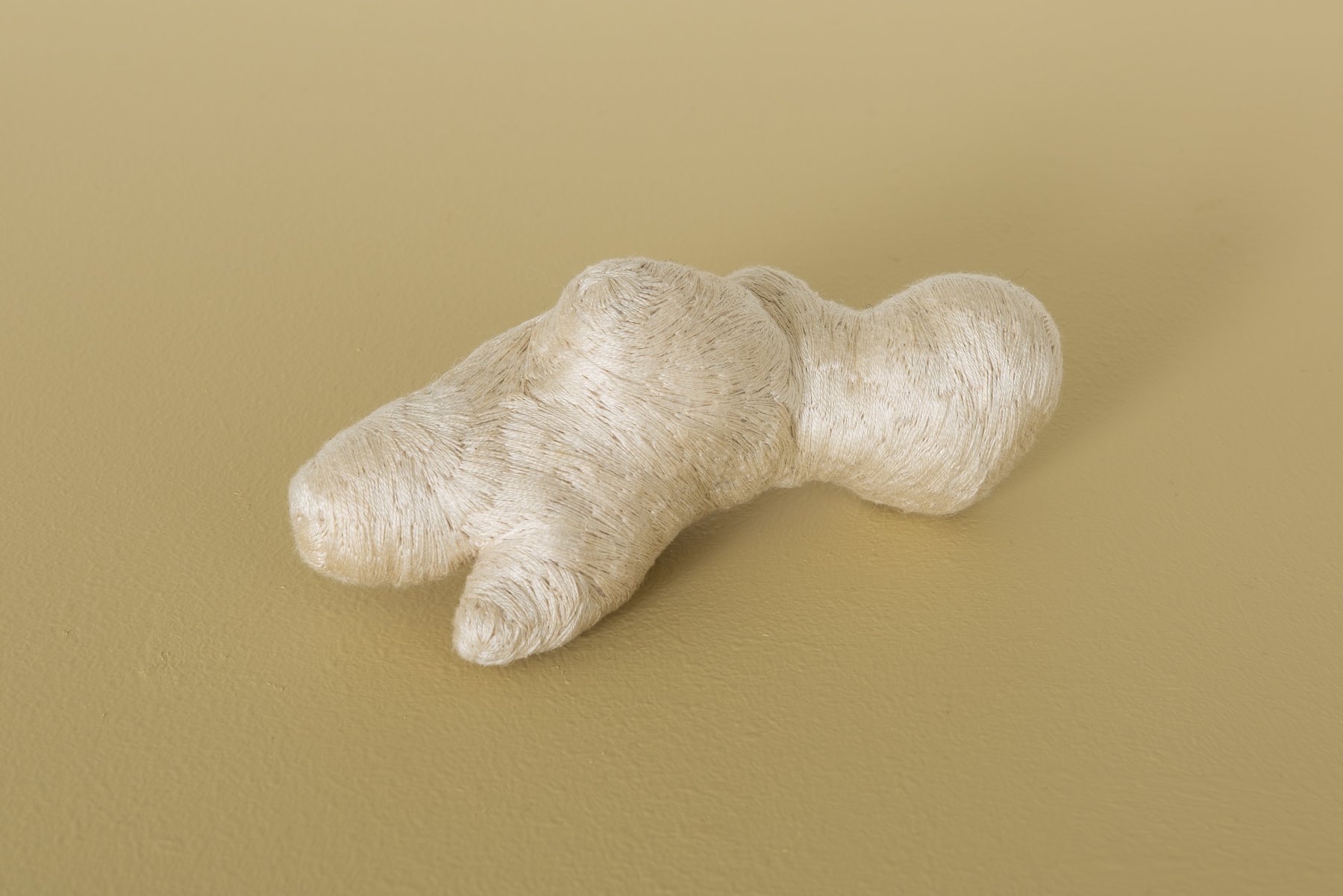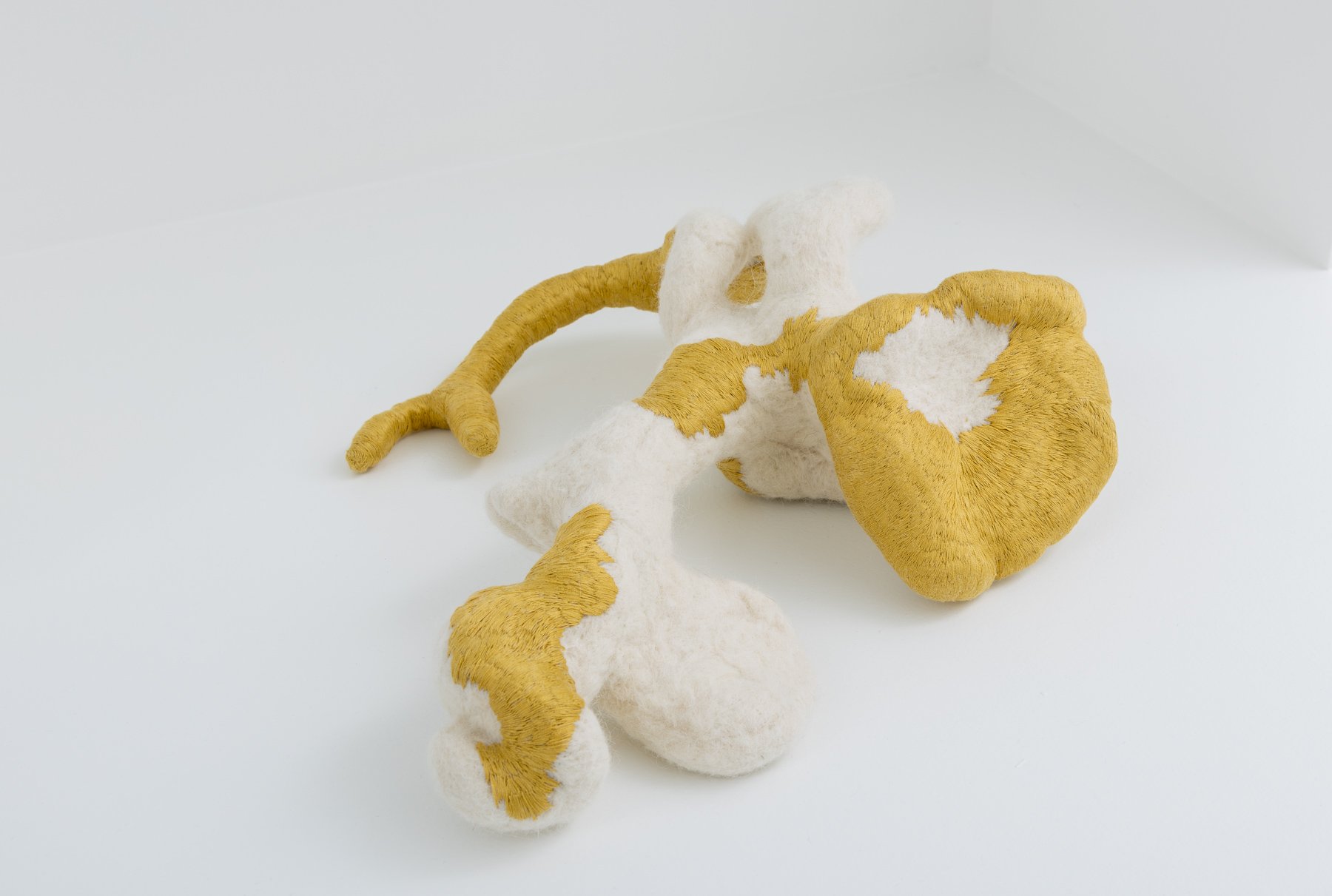Klara Pousette | Liilian Saksi
UNiK mini / Textile
11 November - 19 December 2021
Pousette is exhibiting works made of felted wool with embroideries of cotton thread, inside the wool are remnants of the artist's prescription antidepressant medicine. Her method is to alternate between building up the objects and covering them with embroidery. The ugliness, the anxiety, is being hidden.
The background for the works is the artist's own mental health. In contact with the health service, she was recommended mindfulness as a method of overcoming depression and anxiety. "Slow-stitching" is a type of mindfulness, where you achieve the same effect as that of meditation only through crafts. The goal is a meditative workflow that replaces medication and therapy.
The base of Pousette’s work is the political symbolism in textile crafts. The technique she uses most is embroidery, a craft that has traditionally been done by women. According to The Subversive Stitch: Embroidery and the Making of the Feminine by Rozsika Parker (1984), women were portrayed as more feminine by embroidering; the craft became a tool to describe how feminine and virtuous a woman was. In Pousette's work, the ornate embroidery becomes a contrast to the work's content.
Klara Pousette (born 1989 in Kalmar, Sweden) lives and works in Oslo. She has an MFA in Medium- and Material-based art at the Oslo Academy of the Arts from 2016. Completed solo exhibitions include noia at SOFT Gallery, Oslo (2021), Den gula tapeten at Asker Kunstforening (2019), and Grand Galloping Gala at Makeriet, Malmö (2015). She has also participated in several group exhibitions, including Det textila är politiskt at Rian Designmuseum (2021), Østlandsutstillingen (2019), Høstutstillingen (2017) and Kunsthåndverk 2017 at Nordenfjeldske kunstindustrimuseum, Trondheim (2017). Work by Pousette has been purchased by KODE and Nordenfjeldske kunstindustrimuseum.
The starting point of Liilian Saksi's practice is the raw material of her work – wool. With hand spinning as the primary technique, her textile surfaces are installed on walls or as freestanding constructions. These textile surfaces are variations on a recurring theme: the interactions between colours and colour's interaction with the material itself. Her working methods are based around self-determined limitations, which fluctuate between intuitive and systematic decisions.
In recent years, Saksi has been working primarily with the Sprang technique. Sprang is a form of braiding that can be reminiscent of weaving, but instead of being built of warp and weft, the surface is made of one or more continuous threads. Saksi stretches the yarn parallel, and row by row, she hand-braids the yarns into each other. The work grows from the middle and outward.
Saksi works with wool from the sheep on her family's farm in Sweden and from her own flock on her farm, where she's been living and working since the summer of 2020. The motivation is to anchor the artworks in a life situation and particularly in relationships with other beings. This comes from her interest in humankind's relationship with animals, and related questions about the intrinsic value of animals.
Liilian Saksi (b. 1989 in Norrköping, Sweden) lives and works in Skotterud, Innlandet. She completed her MFA in Medium- and Material-based art from the Oslo Academy of the Arts in 2017. Saksi is currently one of the three nominated artists to the 2021 Sparebankstiftelsen DNB's Grant Exhibition at Oslo Kunstforening. Past solo exhibitions include FLOCK at SOFT Gallery, Oslo (2018), and Mellan ting at Galleri Storck, Oslo (2015). Upcoming solo exhibitions include Kongsvinger Kunstforening (2022), Kunstnerforbundet i Oslo (2023) and KRAFT Bergen (2024).

